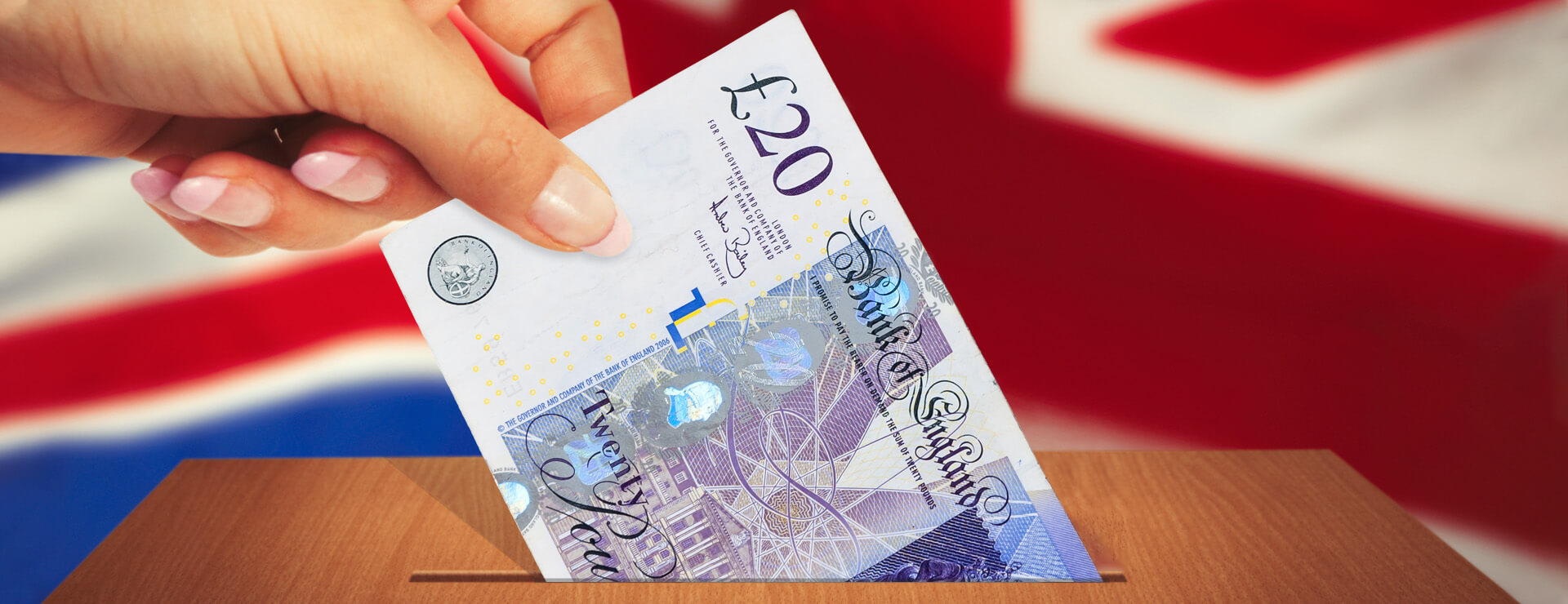
Actions to consider around Capital Gains Tax
Amid all the focus on income tax, one tax that has gone under the radar in the current election is Capital Gains Tax (CGT).
Labour makes no mention of it in its main manifesto, but within its costing document it tells us it plans to bring CGT and treatment of dividends in line with income tax (which it will also increase). For investors with significant assets outside a tax-friendly pension or ISA wrapper, this could be painful. Indeed, the party believes that these two measures alone could generate £14bn of the £82.9bn it is seeking to raise in taxes.
The Liberal Democrats say they will abolish the separate CGT-free allowance and instead tax capital gains and salaries through a single allowance. The Tory manifesto makes no mention of CGT but does pledge to keep income tax, National Insurance and VAT at their current rates. That may still mean a prospective Conservative Chancellor is eyeing up CGT as a juicy target, too – all parties will need to fund their spending plans somehow, and manifestos are deliberately vague on the detail.
Capital Gains Tax steps to take
As the panel below shows, few Chancellors have been able to resist making changes to this tax, which is now at historically low rates. Basic-rate taxpayers pay 18% on gains from residential property (that is not, in broad terms, your primary home) and 10% on other chargeable gains. Higher-rate and additional-rate taxpayers pay 28% for similar property and 20% for other chargeable gains.
Under Labour’s plans, the £12,000 annual allowance will be cut to £1,000 (it sounds like the Liberal Democrats might scrap the allowance altogether). Income tax will rise to 45% for those earning £80,000 or more. At £125,000 the tax rate will rise to what Labour calls a “super-rich” rate of 50%.
This is a good time to at least review your portfolios. Here we have offered some suggestions of steps you might take to mitigate the pain of CGT if you are looking to sell some assets you may have held for some time that are not really appropriate or in line with your current investment strategy. Be aware that you cannot just move these assets into a pension or ISA wrapper as part of your annual allowance. Such a move will trigger CGT. Sorry! There are some things you can do, though:
- Share your assets with your spouse or civil partner prior to disposal
It is possible to give your assets to your spouse or civil partner without triggering a tax event. You can then both take advantage of the CGT allowance while it stands at £12,000. By sharing assets that you want to dispose of between you and your partner you can enjoy £24,000 of gains before you incur CGT. If your spouse or partner is a lower-rate taxpayer you may want to give him or her more to dispose of.
- Give the shares to charity
It is possible to give HMRC qualifying shares to charity without selling them. The charity then makes the disposal – and, because charities are exempt from CGT, there will be no tax to pay. You and the charity both actually end up benefiting.
The market value of the shares on the day they are given can be deducted from your total taxable income.
So if you are a 45% taxpayer giving £10,000 in shares to a charity (and have at least £10,000 of income subject to tax at 45%) you can claim back £4,500 via your self-assessment tax return.
It means a £10,000 donation has actually cost you just £5,500 and also saved you any built-in CGT liability on the gifted shares.
For those who give significant amounts to charity, holding shares with built-in gains, this might be an option in lieu of cash donations they might have otherwise made from their income.
- Wait for a market downturn
From a CGT perspective, the optimum time to sell assets pregnant with gains is when they have lost a lot of those gains during a market correction or recession. Our fraught politics might create that opportunity before any changes are made to the current tax regime, but this does not feel like a reliable strategy.
- Stagger the disposal
Many people will struggle with taking a big CGT hit voluntarily, but they will also recognise that the tax rates could be much higher in future and there might also be a significant cost in holding assets that are no longer appropriate. The answer may be a compromise strategy of disposing of just some assets now.
Dividend steps
Dividend income is currently taxed at 7.5% for basic-rate taxpayers, 32.5% for higher-rate taxpayers and 38.1% for additional-rate taxpayers. Labour is promising to remove the lower rate and move everything in line with income tax rates. There is no mention of dividend income in the Liberal Democrat or Conservative manifesto.
This will affect many small business owners, who often take income in the form of dividends (and who may also be affected by Labour’s proposed scrapping of Entrepreneurs’ Relief).
Those with shares outside a tax wrapper should do what they can to move shares into these wrappers. Arguably it does not make sense to have cash in an ISA and shares outside.
Conclusion
It is dangerous to act recklessly to avoid a tax that may not actually happen. However, we have been warning clients for some time that CGT was a potential target, and it may make sense to bring forward plans you may already have had for disposals. Many people have held for years assets that are pregnant with gains but not necessarily appropriate for today. Their reluctance to pay CGT on these assets has held them back from doing something they should have done some time ago. Now is the time to review these assets.
As always in matters like this, it can pay to take good professional advice.
A brief history of Capital Gains Tax
1965: CGT was first introduced by the then Chancellor James Callaghan and charged at 30% to stop people switching income to capital to avoid paying income tax. The threshold was £9,500. (It was subsequently reduced before climbing again. Today it is just £12,000, so it has not gone up much in five decades.)
1982: With inflation hitting 21%, Geoffrey Howe introduced indexation – allowing people to strip out the effects of inflation when calculating the gain for tax purposes.
1988: Nigel Lawson taxed gains at the taxpayer’s marginal income tax rate – 40% for higher-rate taxpayers.
1998: In his first Budget, Gordon Brown replaced indexation with taper relief – the longer you held the asset, the lower the rate of tax you paid.
2007: Alistair Darling simplified everything by scrapping taper relief and creating a flat rate of 18% (and introducing Entrepreneurs’ Relief).
2010: The Liberal Democrats campaigned to lift CGT in line with income tax. George Osborne lifted the tax for higher-rate taxpayers to 28%.
2016: Osborne cut the higher rate from 28% to 20% and the basic rate from 18% to 10%. However, gains made on residential property were maintained at 18%/28%.
By Charles Calkin
Updated on 4 December 2019
You should not act on the content of this market commentary without taking professional advice. Opinions and views expressed are personal and subject to change. No representation or warranty, express or implied, is made of given by or on behalf of the Firm or its partners or any other person as to the accuracy, completeness or fairness of the information or opinions contained in this document, and no responsibility or liability is accepted for any such information or opinions.
The value of an investment and the income from it can go down as well as up and investors may not get back the amount invested. This may be partly the result of exchange rate fluctuations in investments which have an exposure to foreign currencies. Fluctuations in interest rates may affect the value of your investment. The levels of taxation and tax reliefs depend on individual circumstances and may change. You should be aware that past performance is no guarantee of future performance.

